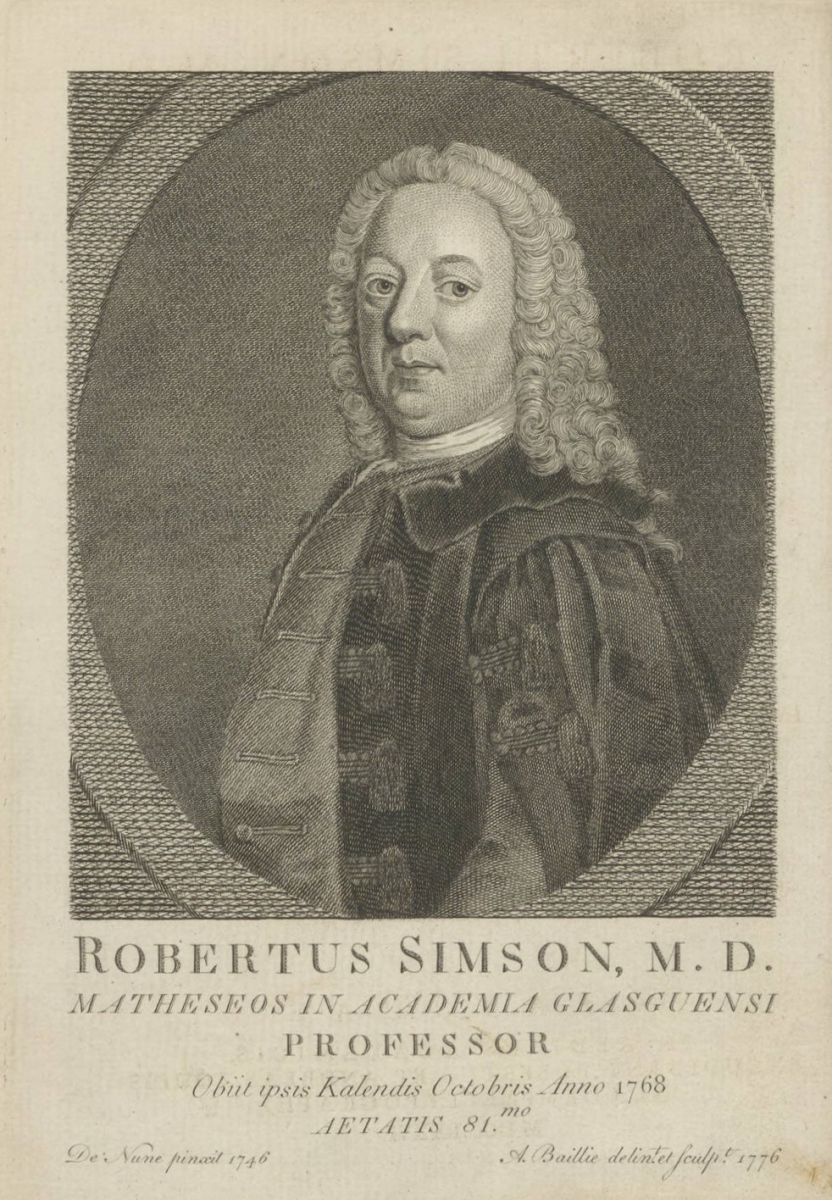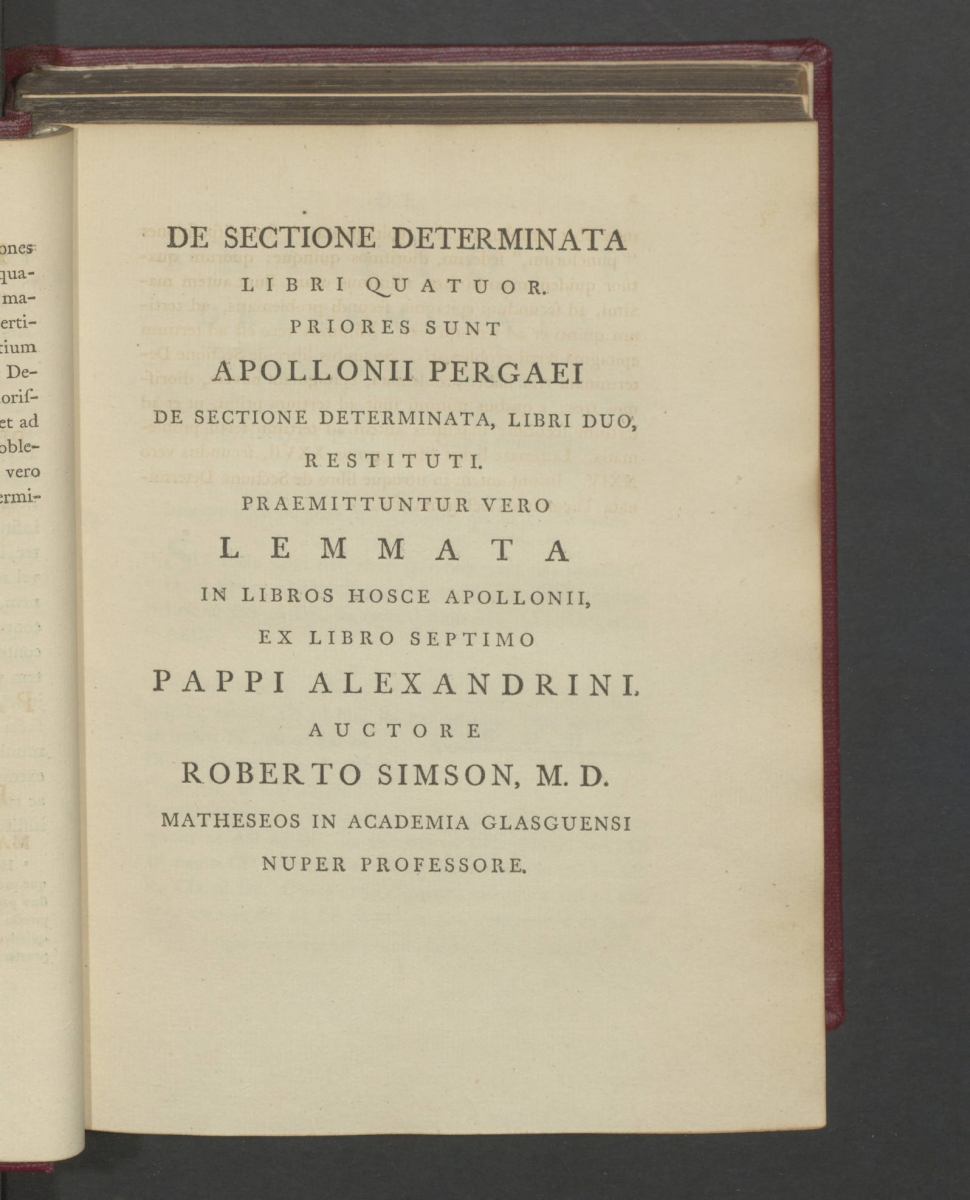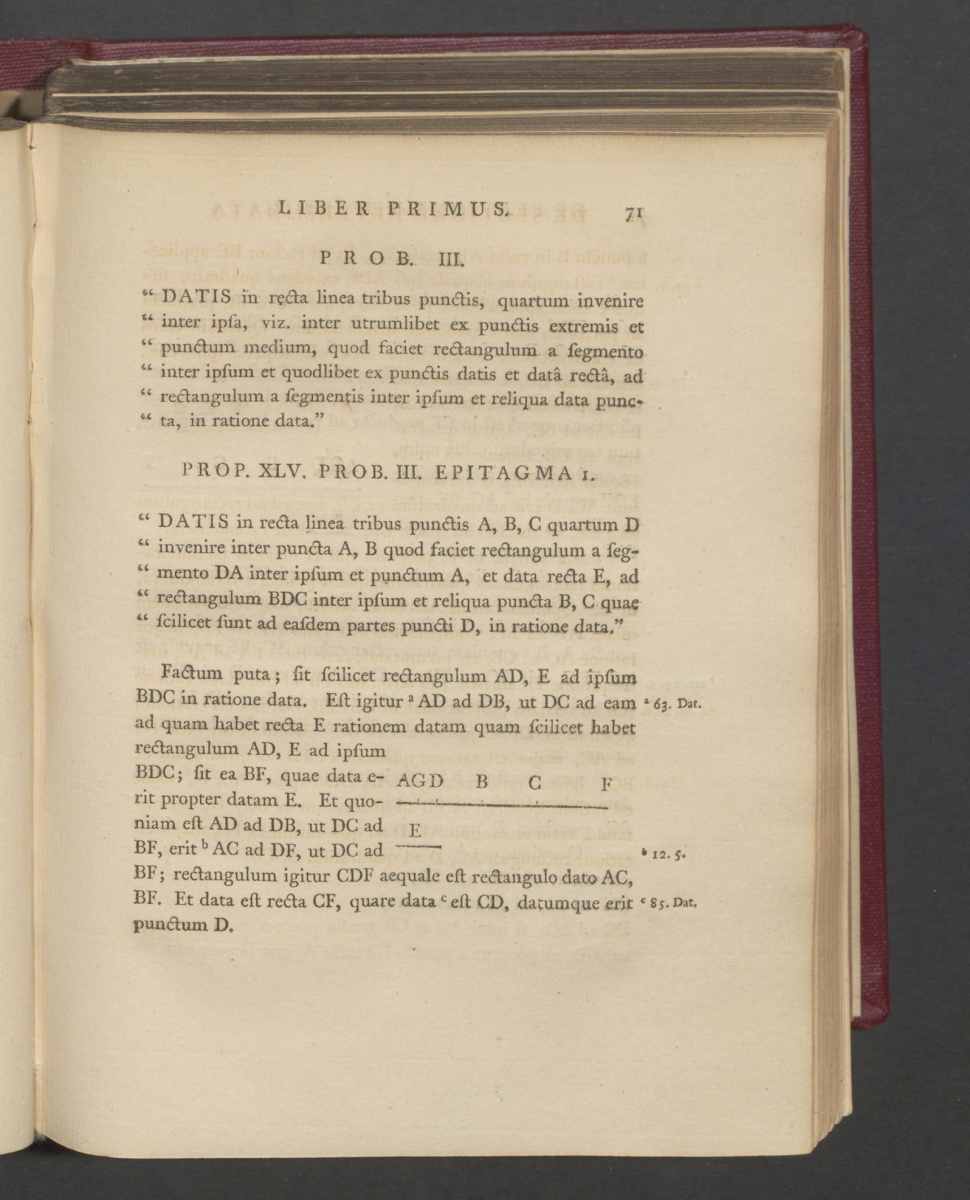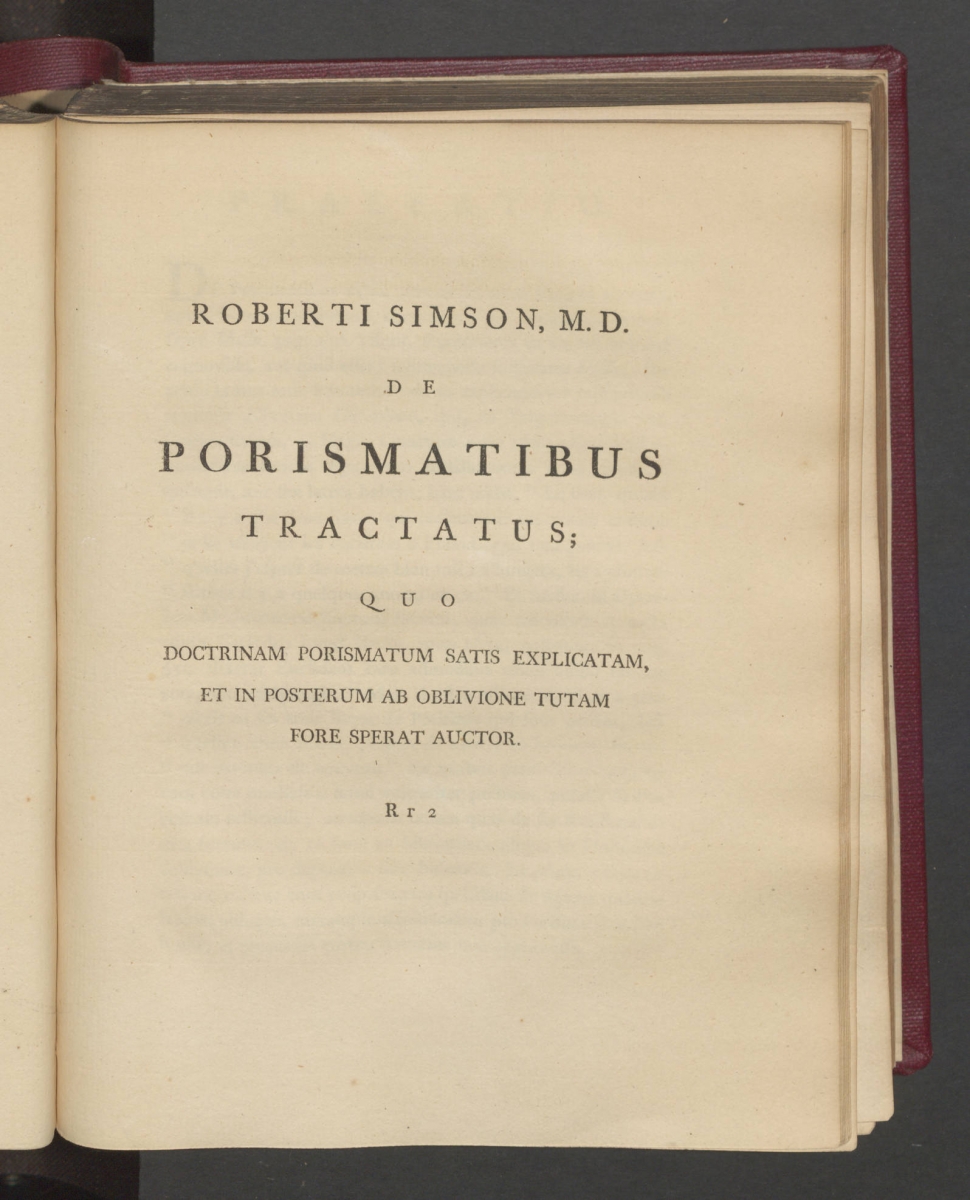- About MAA
- Membership
- MAA Publications
- Periodicals
- Blogs
- MAA Book Series
- MAA Press (an imprint of the AMS)
- MAA Notes
- MAA Reviews
- Mathematical Communication
- Information for Libraries
- Author Resources
- Advertise with MAA
- Meetings
- Competitions
- Programs
- Communities
- MAA Sections
- SIGMAA
- MAA Connect
- Students
- MAA Awards
- Awards Booklets
- Writing Awards
- Teaching Awards
- Service Awards
- Research Awards
- Lecture Awards
- Putnam Competition Individual and Team Winners
- D. E. Shaw Group AMC 8 Awards & Certificates
- Maryam Mirzakhani AMC 10 A Awards & Certificates
- Two Sigma AMC 10 B Awards & Certificates
- Jane Street AMC 12 A Awards & Certificates
- Akamai AMC 12 B Awards & Certificates
- High School Teachers
- News
You are here
Mathematical Treasure: Robert Simson's Opera Quaedam Reliqua
Robert Simson (1687–1768) was a Scottish mathematician and chair of mathematics at the University of Glasgow. His work focused on restoring the existing partial versions of the ancient Greek geometers, such as Euclid and Apollonius. His restoration of Euclid’s Elements was especially influential. Images of a 1756 English first edition and an 1834 American edition of Simson’s The Elements of Euclid are available on Convergence.

The above portrait of Simson is from the frontispiece of his Opera and is one of the earliest images of the special academic gown worn by professors at the University of Glasgow.
Opera, published posthumously in 1776 by James Clow (Professor of Logic at Glasgow and Simson’s executor), contains four of Simson’s works which had not yet been published and an appendix. The title page can be seen below.

The next image is the section header page for the restoration by Simson of Apollonius’ De Sectione Determinata by using Pappus’ Lemmata. It was a work that Simson started early in his career and then completed in his later years.

De Sectione Determinata contains many problems like the one on page 71 pictured below, in which a number of points are given on a line, in this case 3, and another point is to be found that satisfies certain ratios.

According to William Trail, “the next, and certainly the most important portion of the posthumous volume, contains Dr. Simson’s discovery and illustration of the Porisms of Euclid.” [Trail 1812, p. 39] Porisms are “examples of Greek analysis which had been created to handle geometrical statements which fell between problems and theorems, such as classification of the properties of a geometrical locus.” [Ackerberg-Hastings 2000, p. 47] Below is the header page for this section of Opera.

The third work in Opera is De Logarithmis and may have been the last completed work of Simson. It is followed by De Limitibus Quantitatum et Rationum, the fourth part of Simson’s Opera. Although not complete, it was Simson’s attempt at a more rigorous treatment of fluxions than the one provided by Newton. The Opera concludes with an Appendix which contains samples of geometrical problems solved by Simson using methods of the ancient Greeks. Simson may not have intended these problems to have ever been published, but it was decided right before the Opera was printed to include a few examples.
A complete digital scan of the first edition of Simson’s Opera Quaedam Reliqua, call number QA3.S5 1776, can be found in the Linda Hall Library Digital Collections.
Images in this article are courtesy of the Linda Hall Library of Science, Engineering & Technology and used with permission. The Linda Hall Library makes available all existing digital images from its collection that are in the public domain to be used for any purpose under the terms of a Creative Commons License CC by 4.0. The Library’s preferred credit line for all use is: “Courtesy of The Linda Hall Library of Science, Engineering & Technology.”
References
Ackerberg-Hastings, Amy. "Mathematics is a Gentleman's Art: Analysis and Synthesis in American College Geometry Teaching, 1790–1840." PhD diss., Iowa State University, 2000. DOI:10.31274/rtd-180813-13933.
Dickson, Neil. "Tradition and Humour: The Academic Dress of the University of Glasgow." Transactions of the Burgon Society 12 (2012). DOI: 10.4148/2475-7799.1097.
Dickson, Neil. Department of Mathematics, University of Glasgow. Email correspondence, October 2019.
Trail, William. Account of the Life and Writings of Robert Simson, M.D.: Late Professor Mathematics in the University of Glasgow. London, 1812.
Cynthia J. Huffman (Pittsburg State University), "Mathematical Treasure: Robert Simson's Opera Quaedam Reliqua," Convergence (December 2019)




